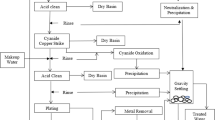Abstract
The effect of applied potential to control bacterial adhesion on titanium is studied. Open circuit potential (OCP) and adhesion density were monitored for 24 h for titanium exposed to bacterial species in seawater environment to standardize the parameters like applied potential and time of exposure. Followed by this, anodic and cathodic potentiodynamic polarization studies were carried out with specimens exposed to Bacillus sp., to monitor adhesion and biofilm formation. Epifluorescence observation clearly showed reduced attachment of Bacillus sp. on polarized surfaces. The effect of applied potential on the formation of biofilms was studied with Pseudomonas sp., Flavobacterium sp., Bacillus sp. and Micrococcus sp. on titanium specimens potentiostatically polarized anodically (+600 mV) above the OCP and cathodically (−600 mV) below OCP. The results of the present study showed the removal of attached cells at both anodic and cathodic potentials. Effect of applied potential on both biofilm formation and conditions for biofilm development are discussed in the paper.






Similar content being viewed by others

References
George R P, Gopal J, Muraleedharan P, Anandkumar B, Baskaran R, Maruthamuthu S, and Dayal R K, Biofilms (2008) doi:10.1017/S1479050508002226 .
Chow W, and Musali Y, Condenser biofouling control, Symposium: the State of the Art, Rapport EPRI June 18–20, 1985, Lake Buena Vista, FL (1985).
Eimer K, Recommendations for the optimum cleaning frequency of the Taprogge tube cleaning system, Technical Report, Taprogge Gesellschaft mbH: Wetter (1985) p 85.
Jones D, Principles and Prevention of Corrosion, MacMillan Publishing Co., New York (1992).
Dexter S C, and Lin S-H, Int Biodeterior Biodegrad 29 (1992) 231.
Edyvean R G J, Maines A D, Hutchinson C J, Silk N J, and Evans L V, Int Biodeterior Biodegrad 29 (1992) 251.
Kajiyama F, and Okamura K, Corrosion 55 (1999) 74.
Kerr A, Hodgkiess T, Cowling M J, Beveridge C M, Smith M J, and Parr C S, J Appl Microbiol 85 (1998) 1067.
Gordon A S, Gerchakov S M, and Udey L R, Canadian J Microbiol 27 (1981) 698.
Roy A K, Spragge M K, Fleming D L, and Lum B Y, Micron 32 (2001) 211.
Busalmen J P, and De Sanchez S R Appl Environ Microbiol 67 (2001) 3188.
Shibata Y, Suzuki D, Omori S, Tanaka R, Murakami A, Kataoka Y, Baba K, Kamijo R, and Miyazaki T, Biomaterials 31(2010) 8546.
Muller-Steinhagen H, Heat exchanger fouling: mitigation and cleaning technologies, Publico Publishers, Essen, Germany (2000) p 2.
Jenner H A, Taylor C J L, van Donk M, and Khalanski M, Marine Environ Res 43 (1997) 1.
Matsunaga T, Namba Y, and Nakajima T, Bioelectrochem Bioenerg 13 (1984) 393.
Matsunaga T, Namba Y, and Nakajima T, Appl Environ Microbiol 58 (1985) 686.
Matsunaga T, Nakasono S, and Masuda S, FEMS Microbiol Lett 93 (1992a) 255.
Nakasono S, Nakamura N, Sode K, and Matsunaga T, Bioelectrochem Bioenerg 27 (1992) 191.
Matsunaga T, and Namba Y, Anal Chem 56 (1984) 798.
Matsunaga T, Nakasono S, Takamuku T, Burgess J G, Nakamura N, and Sode K, Appl Environ Microbiol 58 (1992b) 686.
Okochi M, and Matsunaga T, Electrochem Acta 42 (1997) 3247.
Acknowledgments
Authors sincerely acknowledge Dr. S.C. Chetal, Director, Indira Gandhi Centre for Atomic Research and Dr. T. Jayakumar, Director, MMG, for their keen interest in the study and constant encouragement.
Author information
Authors and Affiliations
Corresponding author
Rights and permissions
About this article
Cite this article
Nithila, S.D.R., George, R.P., Anandkumar, B. et al. Effect of Applied Potential to Control Bacterial Adhesion on Titanium a Condenser Material of Nuclear Power Plants. Trans Indian Inst Met 65, 251–258 (2012). https://doi.org/10.1007/s12666-012-0126-9
Received:
Accepted:
Published:
Issue Date:
DOI: https://doi.org/10.1007/s12666-012-0126-9



